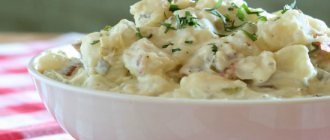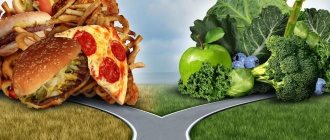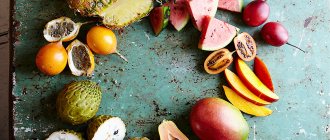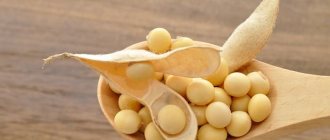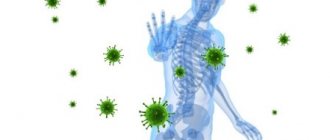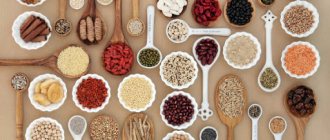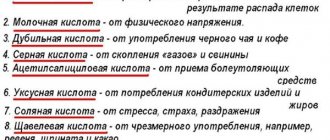Fat categories
Experts divide seafood into 3 categories, depending on fat content:
- The first category includes seafood that contains up to 4 percent fat.
- The second category contains varieties with a fat content of up to 8.5 percent.
- The third category consists of fish varieties that contain more than 8.5 percent fat.
Important point! The fat content of fish is not constant and varies depending on the time of year. The fattest fish before the breeding process.
Fish meat, regardless of variety, can contain from 14 to 27 percent protein and from 0.3 to 36 percent fat. As a rule, there are special tables that indicate the percentage of fat, depending on the type of fish, from which it is permissible to prepare dietary dishes.
Fatty fish
There are varieties of fish that are unsuitable for dietary nutrition. These include fish such as:
- Mackerel and catfish.
- Sprat and stellate sturgeon.
- Fatty herring and eel.
- Sturgeon and halibut.
- Saira.
These fish breeds have a fairly high fat content (more than 8.5 percent), and their energy value ranges from 270 to 350 kcal per 100 grams of product.
Despite such a high percentage of fat, these fish breeds are considered the most beneficial for humans, since their meat contains more iodine and fatty acids. The presence of such components allows a person to fight a number of ailments associated with the cardiovascular system, as well as metabolic processes in the body.
Unfortunately, they are not suitable for preparing dietary meals.
River fish
The fish that live in our rivers and reservoirs have no less advantages than their marine counterparts.
Two hundred grams of river rock provides the adult body with a third of the daily requirement of protein necessary for the normal functioning of internal organs.
River fish is indicated for gastritis with low acidity, as well as for patients with peptic ulcers. Its meat stimulates the secretion of gastric juice, thereby forcing the pancreas to work without overloading it.
Pike perch is rightfully considered the most delicious and nutritious of freshwater fish. This tasty, healthy breed comes to the markets of almost all regions of our country.
100 grams of pike perch meat contains:
- Fat – 1.1 grams.
- Protein – 18.4 grams.
- Water – 79.2 grams.
- Unsaturated fatty acids – 0.2 grams.
- Calorie content – 84 kcal.
- Vitamins - A, B1, B2, B6, B9, C, E, PP.
Note! Before purchasing river fish, inquire about its habitat conditions. Unfortunately, with poor environmental performance, the carcass tends to accumulate harmful substances, which can negatively affect its beneficial properties for humans.
To choose the right inexpensive river fish, remember the following list of recommendations:
- Fresh freshwater fish has a faint, pleasant smell of river and seaweed.
- The carcass is dense, without any suspicious spots or deformations on the skin.
- The scales of freshly caught fish are shiny and moist, and the eyes are slightly bulging, not covered with a film.
- The gills should be bright red.
Note! To prevent river fish from being bony after cooking, use a little secret - before frying, make cuts in the carcass, from the side of the spine. This will help fry the small bones until they are completely softened.
Medium fat varieties
Such varieties have an average level of fat content and include:
- Catfish and mackerel.
- Carp and silverfish.
- Carp and redeye.
- Herring and anchovies.
- Pink salmon and herring are low-fat.
- Pike perch and smelt.
- Ide and bream.
- Salmon and sea bass.
- Tuna.
The energy value of these fish species ranges from 126 to 145 kcal per 100 grams of finished product.
These types of fish are suitable for preparing dietary dishes, but they should only be consumed with the permission of a specialist. These types of seafood are high in protein, making them suitable for sports nutrition. To preserve the usefulness of seafood, it is better to prepare dishes from these types of fish by stewing, salting, smoking, and also steaming.
Varieties with the lowest fat content
Fish breeds that have the least amount of fat.
These varieties include:
- Cod and navaga.
- Haddock and lemonema.
- Pollock and pollock.
- Roach and river perch.
- Pike and pangasius.
- Pike perch and crucian carp.
- Omul and tilapia.
- Burbot and mullet.
- Flounder and whiteeye.
- Lamprey and grayling.
- Mockerel and roach.
- Whitefish and sorog.
This list can also include crustaceans and mollusks.
The energy value of the meat of these types of fish does not exceed 100 kcal per 100 grams of product.
By eating non-fatty varieties of fish, as well as varieties with an average level of fat content, it is possible to get rid of extra pounds, as well as get rid of a number of diseases. Experts recommend introducing children to seafood by preparing dishes using low-fat varieties.
It is important to know! Crucian carp are low-fat varieties of fish and are the only representatives of the carp family that have such a low percentage of fat. The remaining members of this family have an average level of fat content.
Fish calorie table
| Fish | calories | squirrels | fats | carbohydrates |
| Boiled pink salmon | 168,00 | 22,90 | 7,80 | 0,00 |
| Boiled catfish | 114,00 | 15,50 | 5,80 | 0,00 |
| Boiled flounder | 103,00 | 18,30 | 3,30 | 0,00 |
| Boiled crucian carp | 102,00 | 20,70 | 2,10 | 0,00 |
| Boiled carp | 125,00 | 19,40 | 5,30 | 0,00 |
| Boiled bream | 126,00 | 20,90 | 4,70 | 0,00 |
| Boiled mackerel | 124,00 | 22,80 | 3,60 | 0,00 |
| Boiled pollock | 79,00 | 17,60 | 1,00 | 0,00 |
| Boiled burbot | 92,00 | 21,40 | 0,70 | 0,00 |
| Boiled sea bass | 112,00 | 19,90 | 3,60 | 0,00 |
| Boiled blue whiting | 81,00 | 17,90 | 1,00 | 0,00 |
| Boiled herring | 153,00 | 22,00 | 7,20 | 0,00 |
| Boiled sardine | 178,00 | 20,10 | 10,80 | 0,00 |
| Boiled horse mackerel | 133,00 | 20,60 | 5,60 | 0,00 |
| Boiled pike perch | 97,00 | 21,30 | 1,30 | 0,00 |
| Boiled cod | 78,00 | 17,80 | 0,70 | 0,00 |
| Boiled hake | 95,00 | 18,50 | 2,30 | 0,00 |
| Boiled pike | 97,00 | 21,30 | 1,30 | 0,00 |
| Boiled mackerel | 211,00 | 19,60 | 14,70 | 0,00 |
| Boiled catfish | 196,00 | 18,40 | 13,60 | 0,00 |
| Boiled halibut | 216,00 | 14,00 | 17,80 | 0,00 |
| Squid | 110,00 | 18,00 | 4,20 | 0,00 |
| Shrimps | 95,00 | 18,90 | 2,20 | 0,00 |
| Krill | 98,00 | 20,60 | 1,70 | 0,00 |
| Crabs | 96,00 | 16,00 | 3,60 | 0,00 |
| Mussels | 50,00 | 9,10 | 1,50 | 0,00 |
| Beluga blanched | 234,00 | 23,30 | 15,60 | 0,00 |
| Pink salmon | 136,00 | 20,90 | 5,80 | 0,00 |
| Chum salmon | 129,00 | 21,50 | 4,80 | 0,00 |
| Shrimps | 81,00 | 17,80 | 1,10 | 0,00 |
| Crabs | 85,00 | 18,70 | 1,10 | 0,10 |
| Red sockeye salmon | 170,00 | 18,80 | 10,50 | 0,00 |
| Sturgeon | 163,00 | 16,40 | 10,60 | 0,60 |
| Tuna | 96,00 | 22,50 | 0,70 | 0,00 |
| Spicy salted sprat | 154,00 | 14,80 | 10,50 | 0,00 |
| Cod liver | 613,00 | 4,20 | 65,70 | 1,20 |
| Mackerel | 258,00 | 16,40 | 21,40 | 0,00 |
| Flounder fried in oil | 249,00 | 14,40 | 21,30 | 0,00 |
| Sardines (slices) in oil | 249,00 | 17,90 | 19,70 | 0,00 |
| Saury blanched in oil | 283,00 | 18,30 | 23,30 | 0,00 |
| Mackerel in oil | 278,00 | 13,10 | 25,10 | 0,00 |
| Horse mackerel fried in oil | 309,00 | 15,60 | 27,40 | 0,00 |
| Tuna in oil | 231,00 | 22,00 | 15,90 | 0,00 |
| Sprats | 563,00 | 17,40 | 32,40 | 0,40 |
| Pink salmon in tomato sauce | 132,00 | 14,50 | 5,10 | 6,90 |
| Flounder in tomato sauce | 125,00 | 12,60 | 5,40 | 6,30 |
| Bream in tomato sauce | 138,00 | 15,30 | 7,40 | 2,60 |
| Sturgeon in tomato sauce | 181,00 | 14,70 | 12,00 | 3,40 |
| Carp in tomato sauce | 145,00 | 12,40 | 8,70 | 4,10 |
| Salaka in tomato sauce | 118,00 | 17,00 | 4,00 | 3,40 |
| Sevruga in tomato sauce | 179,00 | 16,10 | 11,50 | >2,80 |
| Catfish in tomato sauce | 126,00 | 12,90 | 6,30 | 4,30 |
| Horse mackerel in tomato sauce | 110,00 | 14,80 | 2,30 | 7,30 |
| Pike perch in tomato sauce | 119,00 | 14,00 | 5,30 | 3,70 |
| Pike in tomato sauce | 108,00 | 14,20 | 4,00 | 3,60 |
| Salted pink salmon | 169,00 | 22,10 | 9,00 | 0,00 |
| Salted chum salmon | 184,00 | 24,30 | 9,60 | 0,00 |
| Salted Baltic sprat | 137,00 | 17,10 | 7,60 | 0,00 |
| Salted salmon | 269,00 | 21,00 | 20,50 | 0,00 |
| Atlantic salted herring | 145,00 | 17,00 | 8,50 | 0,00 |
| Iwasi salted herring | 173,00 | 17,50 | 11,40 | 0,00 |
| Salted salmon | 203,00 | 22,50 | 12,50 | 0,00 |
| Salted cod | 98,00 | 23,10 | 0,60 | 0,00 |
| Salted sprat | 225,00 | 19,80 | 16,20 | 0,00 |
| Hamsa salted | 166,00 | 21,20 | 9,00 | 0,00 |
| Beluga caviar granular | 237,00 | 27,20 | 14,20 | 0,00 |
| Granular pink salmon caviar | 230,00 | 31,20 | 11,70 | 0,00 |
| Chum salmon caviar granular | 251,00 | 31,60 | 13,80 | 0,00 |
| Pollock caviar, punched | 131,00 | >28,40 | 1,90 | 0,00 |
| Sturgeon caviar granular | 203,00 | 28,90 | 9,70 | 0,00 |
| Pressed sturgeon caviar | 236,00 | 36,00 | 10,20 | 0,00 |
| Sevruga caviar grainy | 221,00 | 28,40 | 11,90 | 0,00 |
| Hot smoked flounder | 192,00 | 22,00 | 11,60 | 0,00 |
| Hot smoked sprat | 162,00 | 21,30 | 8,50 | 0,00 |
| Hot smoked sea bass | 175,00 | 23,50 | 9,00 | 0,00 |
| Hot smoked bream | 172,00 | 32,80 | 4,50 | 0,00 |
| Hot smoked herring | 152,00 | 25,40 | 5,60 | 0,00 |
| Hot smoked cod | 115,00 | 26,00 | 1,20 | 0,00 |
| Vobla cold smoked. | 181,00 | 31,10 | 6,30 | 0,00 |
| Cold smoked bream. | 160,00 | 29,70 | 4,60 | 0,00 |
| Sea perch (balyk) | 199,00 | 26,40 | 10,40 | 0,00 |
| Fatty Pacific herring, cold-smoked. | 225,00 | 20,30 | 16,00 | 0,00 |
| Mackerel cold smoked. | 150,00 | 23,40 | 6,40 | 0,00 |
| Horse mackerel cold smoked. | 94,00 | 17,10 | 2,80 | 0,00 |
| Sturgeon balyk | 194,00 | 20,40 | 12,50 | 0,00 |
| Dried roach | 235,00 | 46,40 | >5,50 | 0,00 |
| Dried bream | 221,00 | 42,00 | 5,90 | 0,00 |
| Polesie smelt | 264,00 | 46,30 | 8,80 | 0,00 |
| Pskov smelt | 159,00 | 32,00 | 3,40 | 0,00 |
Information about different types of fish. What fish is best to eat when dieting?
Trout and salmon: which fish is fattier
For some reason, many people believe that trout and salmon do not have a high percentage of fat, attributing them to dietary seafood. This is actually a misconception. If we compare these types of fish by energy value, then these breeds are in no way related to low-fat varieties of fish. For example, the energy value of trout meat is about 147 kcal with a fat content of 7 percent, and the energy value of salmon is 219 kcal with a fat content of 15 percent. Therefore, both trout and salmon do not belong to dietary seafood, although trout is less fatty and belongs to fish species with an average fat content.
Red fish for weight loss
It is known that the darker the fillet, the fattier it is. Red fish is superior in fat content to white fish and is not included in the menu when losing weight. However, you can eat it 1-2 times a week. Fatty varieties are healthier than lean ones. The vitamins and minerals contained in red fish improve digestion, remove “bad” cholesterol and strengthen the immune system.
In addition, these seafood contain absolutely no carbohydrates, which means they are not transformed into subcutaneous fat. You can consume red varieties in the morning. During the day, the extra calories obtained from fatty meat will be used up, and this will not affect the diet in any way. You should avoid fatty herring and mackerel, as these types are the most high-calorie reds. But salmon, trout and tuna can be consumed in moderation.
Proper preparation of fish for diet
For people who decide to go on a diet, the best option is to eat fish dishes. Such dishes help to endure such a difficult period for the body much easier. Due to the fact that the dishes are low-calorie, excess weight loss is stimulated; in addition, they perfectly satisfy the appetite.
The most important thing is to prepare dishes in such a way that they retain as many useful components as possible. Therefore, experts advise eating boiled, stewed or baked foods.
Dietary food does not include fried, smoked, salted or dried seafood. You should also not get carried away with canned fish.
Seafood can be used to prepare very varied and quite tasty dishes with a low calorie level. Therefore, you can prepare soups, cutlets, meatballs from fish, but only steamed, as well as casseroles and soufflés.
Interesting to know! Low-fat varieties of fish will not only help solve the problem of excess weight, but will also help cope with some diseases of the gastrointestinal tract. Due to the low calorie content, food is easily digested and digested without burdening the stomach.
Daily consumption of fish dishes allows you to regularly replenish the human body with all the necessary beneficial components, beneficially affecting the functioning of all internal organs. This allows you to lose weight, strengthen the immune system, optimize the functioning of the central nervous system, prevent aging of the body by rejuvenating the skin, etc.
General benefits of fish
Fish is considered a source of high-quality protein, which, unlike meat, is much easier to process. If it takes up to 4 hours to properly digest meat, then 2 hours are needed to dissolve fish. It is thanks to this quality that fish is allowed for weight loss even in the evening meal. The proteins contained in it saturate the body for a long time, the feeling of hunger does not arise quickly, and no excess fat deposits accumulate.
Many people have heard that there are a lot of centenarians in Japan. They have virtually no problems with the thyroid gland. Until old age, they retain smooth skin and good vision. Just look at the photos of long-lived Japanese people to see young-looking, healthy people. Scientists have proven that the Japanese were able to achieve this result thanks to the regular consumption of sea fish. The composition of this product, beloved by many, is replete with the following useful elements:
- vital fatty amino acids: Omega-3, Omega-6;
- vitamins A, D, group B;
- natural phosphorus;
- zinc;
- iodine;
- calcium.
Frequent consumption of seafood helps reduce the risk of developing cardiovascular diseases and stabilize blood pressure levels. If you regularly eat fish, the youth of the brain is prolonged and its activity is maintained.
Iodine helps saturate the thyroid gland with essential substances, which affects calorie burning and metabolic rate.
Omega-3 fatty acid is a very useful element for the human body, without which the synthesis of many substances necessary for the body is impossible. It is aimed at maintaining the normal state of sensitivity of nerve fibers and takes part in constant muscle contraction. This beneficial acid also has a beneficial effect on the general condition of the skin, hair, and nails.
Simple recipes for low-fat fish
Preparing dietary dishes will never be an unnecessary task, especially if the goal is to lose excess weight or recover from a serious illness.
Cod steak with potatoes
The recipe is designed to make 4 servings.
To prepare the dish you will need:
- 700 grams of cod fillet.
- 10 medium-sized potatoes.
- One small onion.
- One small lemon.
- Plain yogurt in the amount of 3 dessert spoons.
- About 50 g rye flour.
- Olive oil in the amount of 3 dessert spoons.
- The horseradish root is not large.
In addition, you will also need dill, parsley and lettuce in a small bunch, as well as some spices.
In addition to cod, other fish, such as pollock or navaga, are also suitable for preparing the dish.
The cooking process is as follows:
- First of all, you need to peel the potatoes and rinse them in cold water. After this, the potatoes are cut into circles up to 1 centimeter thick and boiled.
- The onion is also peeled, washed with cold water and cut into either half rings or rings.
- Half a lemon is also cut into slices.
- The fish fillet is cleaned of bones and cut into portions. After this, they are rolled on all sides in flour, but before that they are sprinkled with various spices. Finally, the fish pieces are fried in olive oil until golden brown.
- Horseradish must be washed and peeled, removing the peel, and then grated.
- To prepare the sauce, you will have to mix yogurt with lemon juice, as well as grated horseradish and herbs. All ingredients must be mixed thoroughly.
Before serving the dish, it is decorated with chopped herbs, lettuce leaves, and lemon slices.
Cod is a low-fat fish and dishes prepared from it are perfect for dietary nutrition, since its calorie content is only 235 kcal.
Tilapia cutlets
The set of products is designed to prepare 5 servings. What is needed for this:
- 700 grams of tilapia meat.
- One onion.
- One chicken egg.
- Boiled round rice - about 100 grams.
- Vegetable oil – 3 tbsp. spoons.
- Dill is not a big bunch.
It is possible to use various spices and seasonings.
Cooking technology
- The fish meat is removed from the bones and ground into minced meat using any available method.
- The onion is peeled, washed and chopped until smooth.
- Add an egg to the minced meat, onions and boiled rice.
- Then the greens are taken and chopped, after which they are added to the minced meat along with spices and seasonings. After this, all ingredients are thoroughly mixed.
- Finally, cutlets are formed from minced meat with spices and other ingredients.
To prepare the cutlets, you need to take a baking sheet greased with oil and place the cutlets on it. After this, the baking sheet is placed in the oven at a temperature of about 150 degrees. After 20 minutes, the dish will be covered with a golden brown crust, which means it can be served. The dish goes well with both boiled potatoes and fresh vegetables.
Vietnamese-style halibut
To prepare 4 servings, you need to have the following products:
- Halibut fillet – about 600 grams.
- 2 tomatoes.
- 2 bell peppers.
- 2 cloves of garlic.
- One lemon or one lime.
- Sauce for fish – 40 ml.
- Chopped ginger – 15 grams.
- Sugar – 10 grams.
- Mint - three sprigs.
Various spices and seasonings will also help.
How to prepare the dish correctly:
- The fillet is washed and cut into portions.
- Take lemon juice and mix with sesame oil, fish sauce and spices. After this, fillet pieces are poured with the prepared mixture and left in this form for some time.
- Tomatoes are peeled and cut into cubes.
- Garlic and pepper are peeled and chopped as finely as possible. After this, they are added to tomatoes and ginger.
- The mint is washed and finely chopped.
- Lemon or lime is cut into slices, but before that they need to be washed.
- A mixture of vegetables is laid out on prepared pieces of fish meat and the marinade is poured on top.
- After this, each piece of fish is taken and wrapped in foil, then they are laid out on a baking sheet.
- The oven is heated to 150 degrees and a baking sheet with fish pieces is placed in it for about half an hour.
After this time, each piece is removed from the foil and placed on plates. Before serving, the dish is decorated with mint and slices of lime or lemon.
On a note! The energy value of the dish is about 192 kcal, so it can be considered dietary.
How to cook dietary fish?
Even on the most democratic Dukan diet, you can eat this product at any stage. In the first phase, Dr. Dukan focuses on proteins and prohibits carbohydrates, fats and sweets. Fish is not the last place in the food system. During all stages of the diet, almost any diet is allowed - sea or river.
Now let's move on to the most delicious moment. Fish recipes for diets are a separate science. They need to take into account the usefulness of a particular variety. And also how safe it will be to use if you have gastritis or diabetes.
I recommend including the following types of seafood in your diet: tuna, flounder, haddock, pollock, cod, as well as shrimp and crabs. See the table above for other types with low and very low fat content. But the amount of protein in such meat is high.
To reduce calorie content, you can boil the fish in water or steam it. The last method is the healthiest and tastiest. The meat turns out juicy and tender. For flavor, sprinkle the pieces with a little lemon juice and add a sprig of herbs (dill, parsley). Sprinkle with aromatic fish seasoning and wrap in foil. In 30 minutes it will be ready.
A plate of fish soup without potatoes is an excellent dietary dish. You can eat as much as you want without any consequences on your waistline. A very tasty broth is made from pike. Minimum calories with amazing aroma.
Try to use less sauces. They provoke appetite. If you don’t like the fishy smell, soak the seafood in milk for an hour. The unpleasant aroma will disappear.
Some of my people complain that the fish falls apart when cooked. Try cooking cod. Its fillet is not as tender as other species. Or you can use a little trick. Add a little vinegar to boiling water and boil the fish calmly. The aromatic fillet will not fall apart.
Bake
Recipes for weight loss contain a minimum of oil. The baking process itself involves cooking the product simultaneously from all sides in the oven. At the same time, the fish turns out much tastier than with banal boiling.
Foil or a sleeve is suitable for baking. Nutritionists have noticed: oven-fried foods are much healthier than those fried in a frying pan. Pieces of fish can be “released from protection” a few minutes before they are ready. Then you will get a delicious crust without butter. Or try baking it in natural yoghurt. The taste is indistinguishable from sour cream. But fewer calories.
If you have gastritis or other gastric problems, you should not eat fried food. But reconsider your cooking methods. In batter or breadcrumbs - definitely not. Especially with diabetes. If you really want to, you can treat yourself to a portion in a small amount of oil in a grill pan. But not more than once a week. Just don’t forget to place the finished pieces on a napkin. The oil should be absorbed. By the way, in my article “How to properly fry fish in a frying pan” you can find a lot of interesting things.
But doctors do not prohibit salty food. Just not herring or ram, of course. It’s better to make lightly salted, low-fat fish yourself. Eat only in the first half of the day. Otherwise, expect unpleasant swelling on your face and extra pounds on the scale. After eating something salty, you just want to drink and drink.
Smoked is strictly prohibited! Don't even think about it - definitely not. The dangers of smoked food have been talked about for so long that everyone has stopped paying attention to it. But in vain - dangerous carcinogens can cause cancer.
Smoked meats negatively affect the stomach and liver. Firstly, the amount of salt in such products is increased. Secondly, the calorie content increases due to the removal of water during the cooking process. In order not to be unfounded, I am attaching a table for comparison.
| Fats in fresh fish, per 100 grams | Fats in smoked fish, per 100 grams | Calorie content of smoked fish per 100 g | |
| Hot smoked perch | 0,9 | 8 | 166 |
| Cold smoked sturgeon Tesha | 10,9 | 25,7 | 302 |
| Cold smoked sturgeon balyk | 10,9 | 12,5 | 194 |
| Cold smoked roach | 2,8 | 6,3 | 181 |
| Hot smoked cod | 0,6 | 1,2 | 115 |
| Hot smoked bream | 4,4 | 4,5 | 172 |
| Cold smoked bream | 4,4 | 4,6 | 160 |
| Hot smoked cod | 0,6 | 1,2 | 115 |
| Cold smoked mackerel | 13,2 | 15,5 | 221 |
And careless manufacturers can smoke low-quality raw materials. In addition to the main problems, you can also get poisoned.
Fish is a tasty and healthy product that will help you lose weight. Choose low-fat varieties and cook. Fried, baked or boiled - you can calculate a varied menu for the whole week. Daily use will make you not only slim, but also beautiful.
Speaking of proper nutrition, any food, including fish, cannot be fried in oil, smoked, salted or pickled. From all these manipulations, not only the nutritional value of the product is lost, but also the level of fats, carbohydrates and harmful substances that clog the arteries increases.
It is more advisable to steam fish for a diet, bake it in the oven and prepare soup from it. But the most useful of the three cooking methods is steam cooking. Thus, all excess substances flow out of the seafood, and it becomes leaner.
A side dish for dietary fish can be vegetables cooked in a steamer, baked pumpkin or eggplant, boiled brown rice, baked or boiled potatoes, boiled beans with vegetables, green vegetable salad and other vegetables and lean cereals, steamed or in the oven.

